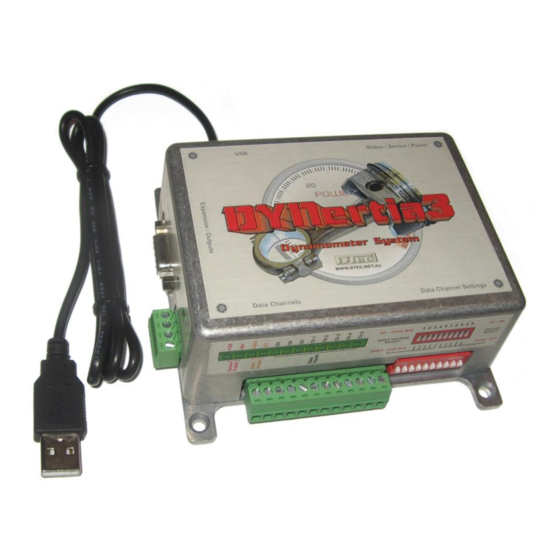dtec DYNertia3 Schnellstart-Handbuch - Seite 20
Blättern Sie online oder laden Sie pdf Schnellstart-Handbuch für Messgeräte dtec DYNertia3 herunter. dtec DYNertia3 20 Seiten.

DYNertia3 Quick Start (Inertia- Chassis type)
Assessing test results- Signal issues
If you display the same data above in 'speed' mode (kph on X axis), and not 'RPM' mode it will remove the impact on the
graph X axis scale, however the torque will still be erratic.
Below is same data above displayed in 'Speed' mode (kph is the X-axis), not 'RPM' mode. Nice power trace proves the
theory that poor TAC signal was the issue.
NOT
OK- Power traces getting very erratic as
speed rises. Mechanical issue creating variations
in shaft speed (vibrations or 'snatch'). Greater
filtering will help somewhat but not a fix.
NOT
OK- Traces go back and forth.
This can be from ignition interference etc. but the image above is
lacking any large 'spikes' that this usually creates.
Likely the engine RPM differs to roller RPM in the data so this
implies an issue i.e. roller smooth, engine erratic. This could be from
'RPM adapter' (if used) was getting bad signal (poor connection,
ignition missfire or even a rev-limiter cutting spark).
It is useful to realise the 'power' is calculated from the roller/flywheel
mass speed sensor, not the "TAC" input (RPM adapter) which is
used to derive 'torque' from the 'power' and is used for the X axis
graph scale (RPM).
Best avoid the optional TAC input use if it's not
Note:
stable or interference is impacting it, choose another
RPM source option.
NOT
from the ignition system.
www.dtec.net.au
OK- Crazy data due to electrical interference
20
